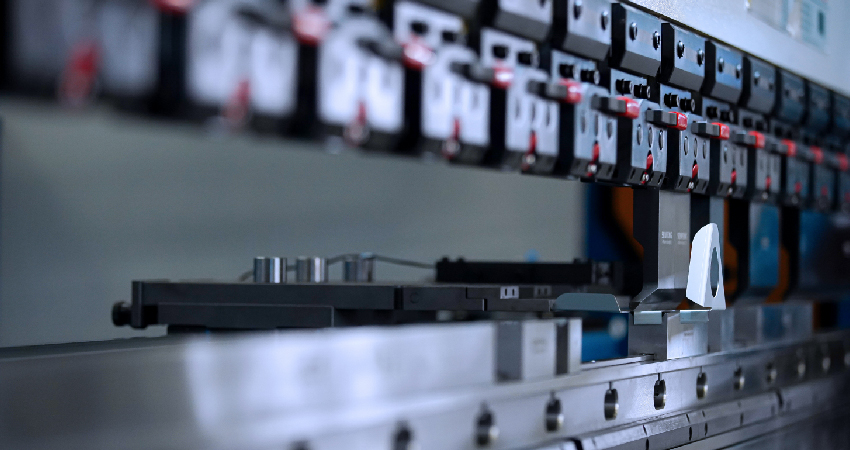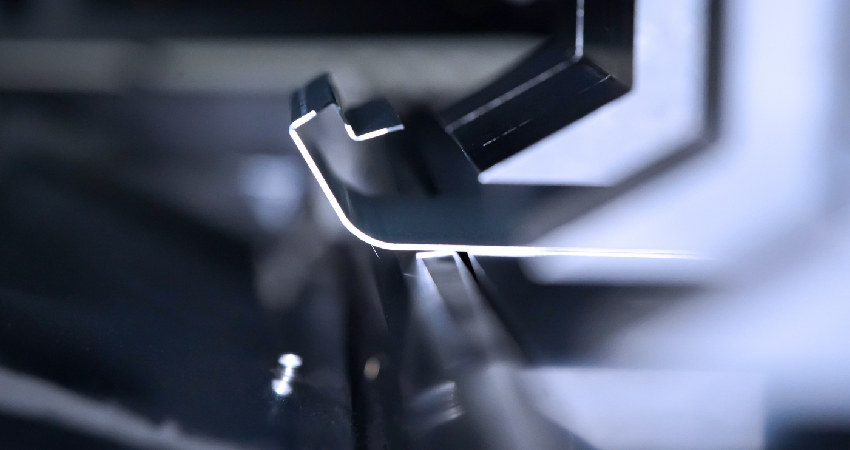
Sheet Bender Consumables: The Ultimate Replacement Guide
Introduction
Sheet bending machine including automatic panel benders and CNC press brakes, are essential in metal fabrication for precise sheet metal bending. Although they serve similar purposes, they differ in design, automation, and consumable needs. This article outlines the key consumables for both types of sheet bending machines and their recommended replacement frequencies to ensure optimal performance and longevity.

Panel Bender vs. Press Brake
Before diving into consumables, it’s important to clarify the distinction between panel bending centers and press brakes:
Sheet metal brakes are standalone machines designed to apply precise bending force to metal sheets. Operators manually load sheets and monitor the bending process, and automation levels are generally lower than in panel bending machines. Press brakes are suitable for smaller production runs and custom parts.
Panel benders are automated systems often integrated with multiple processes for high-speed, large-scale production. Equipped with robotic arms, conveyors, and automated loading/unloading, bending centers minimize human intervention. These systems are ideal for high-volume runs and consistent product quality.
The different levels of automation and operational demands in these two types of machines result in different consumable needs and maintenance practices.
Key Consumables and Replacement Frequencies for Sheet Bending Machine-Press Brake
CNC press brakes, as single-unit machines, require regular attention to certain key consumables to maintain accuracy and efficiency. Here are the essential consumables:
1. Punches and Dies
Purpose: Punches and dies are critical tools used in the bending process, exerting force and shaping the metal.
Replacement Frequency: Punches and dies wear down over time, especially when bending hard metals or thick sheets. Regular inspection is necessary, with replacements generally recommended every 6-12 months, depending on usage intensity.
2. Hydraulic Fluid
Purpose: Hydraulic fluid provides the force needed for bending, lubricates the system, and reduces component wear.
Replacement Frequency: The hydraulic oil should be replaced after the first 2000 hours of operation for a new machine, and subsequently every 4000 to 6000 hours. Each time the oil is changed, the oil tank should be cleaned. Additionally, the oil temperature in the hydraulic system should be maintained between 35°C and 60°C, and should not exceed 70°C. Excessive temperatures can cause oil degradation and damage to components.
3. Filters
Purpose: Filters protect the hydraulic system from contaminants that could impair performance.
Replacement Frequency: Replace or clean filters with each hydraulic fluid change, and inspect every three months to ensure they remain effective. For air filters on the hydraulic tank, inspect every three months and replace yearly if possible.
4. Seals and Gaskets
Purpose: Seals and gaskets prevent hydraulic leaks and maintain pressure.
Replacement Frequency: Inspect every 6-12 months and replace if any signs of wear or leakage are detected.
5. Lubricants
Purpose: Regular lubrication of moving parts reduces friction, prolongs component life, and improves machine performance.
Replacement Frequency: Apply lubrication according to the manufacturer’s guidelines. Regular lubrication checks every 6-12 months can help prevent premature wear.
6. Electrical and Control Components
Purpose: Electrical components ensure precise control and functioning.
Replacement Frequency: Regular inspections can identify components needing replacement, though major parts often last several years with proper care.
Consumables and Replacement Frequency in Sheet Bending Machine-Panel Bender
Panel benders, due to their high level of automation, require consumables that support not only the bending process but also the integrated systems that make automation possible. These are some of the essential consumables:
1. Punches, Dies, and Robotic Grippers
Purpose: Similar to press brakes, punches and dies are crucial for shaping metal. Robotic grippers are also essential as they automate sheet movement.
Replacement Frequency: Punches and dies should be replaced every 6-12 months, depending on usage. Grippers require routine inspections for wear, as they handle repeated lifting and positioning tasks, typically needing replacement every 12-18 months.
2. Sensors and Control Modules
Purpose: Advanced sensors and control modules ensure precise automation, detecting alignment, positioning errors, and material inconsistencies.
Replacement Frequency: Regular calibration and inspections are essential every 6-12 months. High-production environments may require even more frequent checks.
3. Robotic Arm Lubricants and Coolants
Purpose: Robotic arms in panel benders require specialized lubricants and, sometimes, coolants to prevent overheating.
Replacement Frequency: Check every 6-12 months or based on manufacturer recommendations, as continuous use in high-speed production can increase the need for replacements.
4. Safety Mechanisms and Emergency Stop Systems
Purpose: Safety mechanisms, including emergency stop systems, are crucial in preventing accidents.
Replacement Frequency: Inspect safety components regularly—at least every 6 months—and replace as needed to ensure all safety systems function effectively.
5. Clamping and Rotation Axis
Purpose: The clamping and rotation axis is essential for securing and rotating materials accurately during the bending process, ensuring precise alignment and minimizing material slippage.
Replacement Frequency: Regularly inspect the clamping and rotation axis components, such as the clamps, bearings, and rotational mechanisms, every 6-12 months. Replace any worn parts as needed to maintain optimal grip and accurate rotation, which are key to achieving consistent bending quality.
Maintenance Tips for Optimal Performance of Sheet Bending Machine
To extend the life of both press brakes and panel benders and ensure safe, efficient operation, follow these maintenance guidelines:
Daily Maintenance
- After cleaning the ball screw and rolling guide rails, ensure they are properly lubricated.
- Keep the molds clean, and check for any dirt on the fiber optic rods. Clean around the rods as needed.
- Clean the machine body thoroughly.
- Check the oil level in the tank weekly.
- Inspect the air pump for water and ensure the air system is not blocked.
- Regularly clean the oil outlet filter screen to maintain system efficiency.
System and Component Checks
- Verify that the machine starts normally and that the operating system is functioning correctly.
- Inspect the axes for proper movement and ensure the engine is running smoothly.
- Listen for any unusual noise during operation.
- Check the condition of the upper and lower gears for wear.
- Ensure the upper blade moves freely and the foot switch is responsive.
- Test the startup process for quick and reliable response.
- Confirm that the pressure gauge is functioning correctly and that the hydraulic pressure is within the normal range.
- Inspect hydraulic oil pipes and cylinders for any leaks.
Monthly Maintenance
- Clean the hydraulic components monthly to prevent dirt from entering the system. Do not use cleaning agents.
- Regularly check and maintain the air-liquid pump oil tank.
Conclusion
Understanding the consumables and replacement frequency for both press brakes and panel benders is essential to maintaining productivity, quality, and longevity. While press brakes require regular maintenance of essential parts like hydraulic fluid and tooling, panel benders require additional attention to automated components like sensors and robotic arms.
Hope this article helps you gain a better understanding of consumables and improve the maintenance of your sheet metal bending machine.

